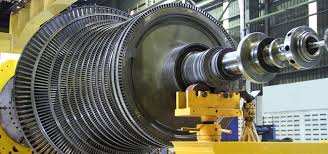

The program assumes familiarity with troubleshooting and maintenance of rotating equipment. It adopts the approach to understanding the failure of all types of pumps and compressors. From a component-by-component perspective, the program investigates the root causes of failure, and relates these to operating conditions and process parameters. Installation, lubrication and wear related failure mechanisms are identified and a detailed understanding of the troubleshooting and diagnostic methods needed to detect and identify these is developed. The program provides participants with the knowledge needed to be effective in the inspection, monitoring and diagnostics of pumps and compressors, with emphasis placed upon the importance of a combined condition monitoring and strip-down inspection approach to maintenance. The main objective of this course is to enhance skills of plant personnel to increase productivity. This program aims to provide delegates with a comprehensive understanding of how to use a combined predictive and preventive maintenance approach to achieve maximum reliability and greatest understanding of any deterioration that may occur. This course focuses on the essentials to add to the skills of those who are responsible for plant equipment to reduce breakdowns and get more operation hour.
Plant and process engineers, operators, supervisors and team leaders and managers in maintenance engineering and production. It is suitable for those who expects to become involved at any stage in project application and applicable maintenance technologies. The seminar will also benefit anyone who wishes to update themselves on pump and compressor technology, judge the suitability of different types of rotating equipments for their needs, and learn how to operate and maintain them for the benefit of their organizations
TECHNOLOGY OF PUMPS
OPERATION & PERFORMANCE
Compressors
5..Maintenance
6.Failures Analysis and Troubleshooting
Centrifugal Compressors Technology And Maintenanc
1.Aerodynamic Components
2.Compressor Characteristics
3.Systems And Techniques Of Protection
4.Technology Of Maintenance
5.Troubleshooting
Gas turbine
Fundamental Thermodynamics:
- Reversible cycles with ideal gases
- Actual gas turbine cycle
- Combustion air compressor performance characteristics
- Combustion processes
- Gas turbine performance calculation
- Comparison of basic specifications
Gas Turbine Components:
- Axial-flow compressor
- Radial-inflow turbines
- Combustors, construction types
- Igniters
- Fuel nozzles
- Hot path components
- Firing concept and emission control
Gas Turbine Operation and Maintenance:
- Operating philosophies
- Analytical on-line condition monitoring
- Modern bores copy
- Selecting maintenance approaches
- Maintenance planning
- Spare parts and special tools
- Inspection, overhaul and repair
- Maintenance control and documentation
- Evaluation
- Gas turbine maintenance effectiveness
- Establishing and tracking performance indices
Steam Turbines:
LUBRICATION AND BEARING PROBLEMS
COUPLINGS & MISALIGNMENT
SEALS
VIBRATION MONITORING
o What to monitor and where.
Alignment Methods & Application
1- Introduction
2- Alignment Calculation
3- Rim and Face Shaft Alignment
4- Double Radial Method.
5- Reverse/Cross Dial Alignment Method.
6-Shaft to Coupling Spool Method .
Planned Maintenance Concepts
Predictive Maintenance Technology
1 Introduction
2 Benefits of predictive maintenance
3 Predictive maintenance techniques
3.1 Vibration monitoring
3.2 Thermography
3.3 Tribology
3.4 Process parameters
3.5 Visual inspection
3.6 Ultrasonic monitoring
3.7 Other techniques
RECTUS attendance certificate will be issued to all attendees completing minimum of 80% of the total course duration
| Code | Date | Venue | Fees | Register |
|---|---|---|---|---|
| MR114-01 | 23-03-2026 | Kuala-Lumpur | USD 5950 | |
| MR114-02 | 15-06-2026 | Dubai | USD 5450 | |
| MR114-03 | 27-09-2026 | Cairo | USD 5450 | |
| MR114-04 | 21-12-2026 | Dubai | USD 5450 |
Providing services with a high quality that are satisfying the requirements
Appling the specifications and legalizations to ensure the quality of service.
Best utilization of resources for continually improving the business activities.
BTS keen to selects highly technical instructors based on professional field experience
Since BTS was established, it considered a training partner for world class oil & gas institution
1st floor, Incubator Building- Masdar City - Abu Dhabi - United Arab Emirates
Sun to Fri 09:00 AM to 06:00 PM
Contact Us anytime!
Request Info